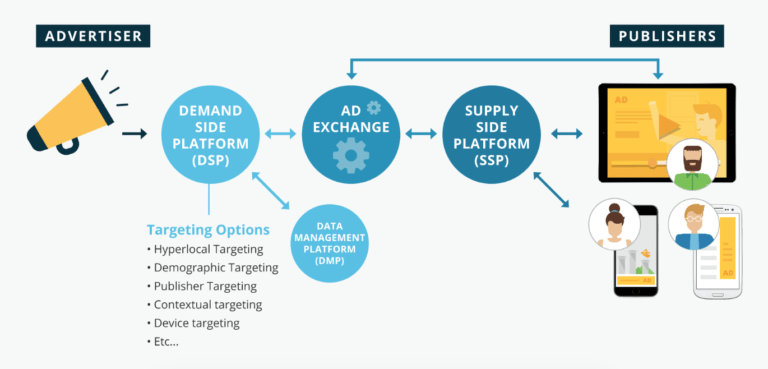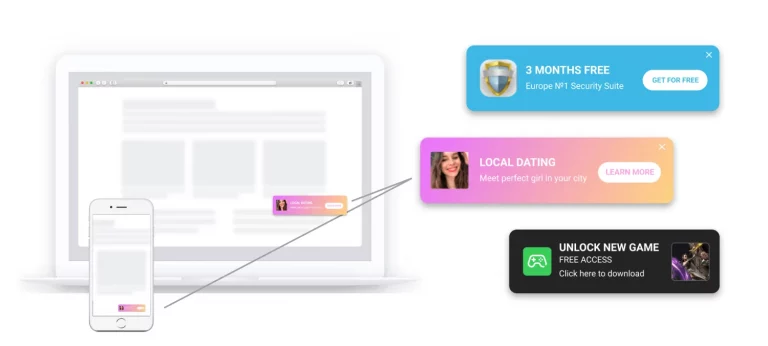In today’s ever-reliant digital world, technology hiccups can bring our lives and businesses to a screeching halt. From frustrating internet outages to puzzling software malfunctions, having access to reliable tech support is more crucial than ever.
This is where businesses offering tech support services come in, providing a lifeline to users in need. But with countless options available, how do you ensure potential customers struggling with tech issues find your team of experts? Enter PPC (Pay-Per-Click) advertising, a powerful tool for generating inbound calls directly from motivated users searching for solutions.
However, the landscape of PPC for tech support advertising is evolving in 2025. This guide will equip you with the knowledge and strategies to navigate potential platform restrictions and build a winning PPC campaign that gets phones ringing with qualified leads seeking your tech expertise.
What is PPC Calls?

PPC (Pay-Per-Click) Calls refer to a type of advertising model where businesses pay for phone calls generated from their advertisements. Instead of paying for clicks on an ad leading to a website, businesses pay for the actual phone calls that potential customers make after seeing the ad. This model is beneficial for businesses with crucial phone interactions, such as service-based industries, healthcare, and legal services. Here’s how it typically works:
- Ad Placement: Advertisements are placed on platforms that support PPC calls, such as Google Ads, Bing Ads, or various social media platforms. These ads can appear in search results, on websites, or within mobile apps.
- Call to Action: The ads include a phone number or a clickable call button, encouraging users to make a phone call. This button often appears on mobile devices where users can directly tap to call.
- Tracking and Analytics: When a user clicks the call button or dials the phone number, the call is tracked using special tracking numbers or call-tracking software. This allows the advertiser to monitor the effectiveness of their campaigns and measure return on investment (ROI).
- Payment: Advertisers are charged for each call received from the ad. The cost per call can vary based on factors such as industry, competition, and the quality of the leads generated.
What is PPC Calls For Tech Support?
PPC (Pay-Per-Click) Calls for Tech Support is a specific type of advertising model tailored for companies providing technical support services. In this model, tech support businesses pay for phone calls generated from their advertisements, rather than just clicks leading to their website. This can be particularly effective for tech support services where immediate, direct communication with potential customers is essential.
Navigating Platform Restrictions
To navigate platform restrictions for your article titled “Complete Guide: PPC Calls For Tech Support in 2025,” consider the following strategies:
- Understanding Platform Policies:
- Google Ads: Ensure your PPC (Pay-Per-Click) campaigns comply with Google Ads policies. For tech support, Google has strict rules to prevent scams. You may need to get certified by Google as a third-party technical support provider.
- Bing Ads: Similar to Google, Bing has policies to safeguard users from fraudulent tech support ads. Review and comply with Bing’s advertising policies.
- Creating Trustworthy Content:
- Transparency: Clearly state who you are, what services you provide, and how users can verify your legitimacy.
- Contact Information: Provide comprehensive contact details including a physical address, phone number, and email.
- Certifications and Endorsements: Display any relevant certifications, endorsements, or partnerships with reputable organizations.
- Ad Copy and Landing Pages:
- Honesty in Ad Copy: Avoid using misleading language or exaggerated claims. Be clear about what the user will get when they click on your ad.
- User Experience: Ensure your landing pages are user-friendly and relevant to the ad copy. Google and Bing value a good user experience, which includes easy navigation and clear calls to action.
- Complying with Technical Support Advertising Guidelines:
- Google’s Certification: Apply for and maintain Google’s third-party tech support certification if required.
- Disclosures: Disclose your relationship with the brands you support, especially if you are a third-party provider.
- Utilizing Other Platforms:
- Social Media: Platforms like Facebook, LinkedIn, and Twitter have their ad guidelines. Ensure your ads comply with their specific rules regarding tech support services.
- Content Marketing: Write blog posts, create videos, and engage in forums to organically drive traffic to your tech support services. This can help build trust and authority.
- Monitoring and Adjusting Campaigns:
- Regular Monitoring: Keep an eye on your ad performance and any notifications from the platforms. Adjust your campaigns as needed to stay compliant.
- Feedback Loop: Collect feedback from users to improve your services and address any concerns they may have.
- Legal and Ethical Considerations:
- Compliance: Adhere to all relevant laws and regulations, including data privacy laws such as GDPR and CCPA.
- Ethical Marketing: Maintain high ethical standards in your marketing practices to build long-term trust with your audience.
- Consulting Experts:
- Legal Counsel: Consult with a legal expert to ensure all your practices are legally sound.
- Marketing Professionals: Work with experienced marketers who understand the nuances of tech support advertising.
By adhering to these strategies, you can effectively navigate platform restrictions and run successful PPC campaigns for tech support services in 2025.
Building a Winning PPC Campaign
Creating a successful Pay-Per-Click (PPC) campaign involves careful planning, continuous optimization, and a deep understanding of your target audience. This guide provides a step-by-step approach to building a winning PPC campaign.
1. Setting Clear Goals
Define Your Objectives
- Sales and Leads: Are you looking to drive sales or generate leads?
- Brand Awareness: Is your primary goal to increase brand visibility?
- Website Traffic: Are you aiming to increase the number of visitors to your website?
Key Performance Indicators (KPIs)
- Conversion Rate: The percentage of visitors who take the desired action.
- Cost Per Acquisition (CPA): The cost to acquire a customer.
- Click-Through Rate (CTR): The percentage of ad impressions that result in clicks.
2. Conducting Thorough Keyword Research
Identify Relevant Keywords
- Use tools like Google Keyword Planner, Ahrefs, and SEMrush to find relevant keywords.
- Focus on a mix of broad, exact, and long-tail keywords to cover various search intents.
Analyze Competitors
- Investigate your competitors’ keyword strategies using tools like SpyFu or SEMrush.
- Identify gaps and opportunities in your competitors’ keyword usage.
3. Crafting Compelling Ad Copy
Best Practices for Ad Copy
- Clear Headlines: Make your headlines compelling and relevant to the user’s search query.
- Benefits and USPs: Highlight unique selling points and benefits of your product or service.
- Strong CTA: Use clear and compelling calls to action, such as “Buy Now,” “Learn More,” or “Call Today.”
Utilizing Ad Extensions
- Sitelink Extensions: Direct users to specific pages on your website.
- Call Extensions: Allow users to call your business directly from the ad.
- Review Extensions: Display positive reviews to build trust.
4. Designing High-Converting Landing Pages
Essential Elements
- Consistency: Ensure the landing page matches the ad copy and user intent.
- Clear CTA: Make the call to action prominent and easy to complete.
- Trust Signals: Include testimonials, reviews, and trust badges to build credibility.
Mobile Optimization
- Ensure your landing page is fully responsive and loads quickly on all devices.
- Simplify forms for easier completion on mobile devices.
5. Implementing Tracking and Analytics
Setting Up Conversion Tracking
- Use tools like Google Analytics and Google Tag Manager to track conversions.
- Implement tracking for different conversion actions, such as form submissions, phone calls, and purchases.
Analyzing Data
- Monitor metrics like CTR, CPC, conversion rate, and CPA.
- Use A/B testing to continuously improve ad copy, landing pages, and bidding strategies.
6. Budget Management and Bid Strategies
Allocating Your Budget
- Start with a modest budget and increase it based on performance.
- Allocate more budget to high-performing keywords and campaigns.
Choosing the Right Bidding Strategy
- Manual CPC Bidding: Provides full control over your bids.
- Automated Bidding: Use strategies like Target CPA or Target ROAS to optimize for specific goals.
- Enhanced CPC (ECPC): Allows Google to adjust your manual bids to maximize conversions.
7. Continuous Optimization and Adaptation
Regular Performance Reviews
- Conduct regular reviews of your PPC campaign performance.
- Identify areas for improvement and make necessary adjustments.
Staying Updated with Industry Trends
- Follow industry blogs, attend webinars, and participate in forums to stay informed about the latest PPC trends and updates.
- Adapt your strategy to incorporate new trends and technologies, such as AI-driven optimizations and voice search.
Experimentation and Testing
- Continuously test new ad copies, keywords, and landing pages.
- Use the insights gained from testing to refine your PPC strategy and improve results.




